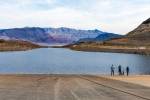Change is needed — now more than ever
This year has brought significant changes both in our natural environment and in people and institutions. The end of the year is a time to look back and assess where we are and plan how to move forward.
Green living means to live sustainably on the planet. Sustainability is the ability to continue a defined behavior indefinitely. The behavior we are hoping to continue indefinitely is to live the lifestyles to which we have grown accustomed.
It’s not uncommon to strive to live financially sustainable lives by living within the limits of our income. But how well do we live sustainably within the physical limits of our home, planet Earth?
Earth’s reality
Earth’s natural physical limits are real. We know for a fact that increased levels of heat-trapping greenhouse gases in the atmosphere correlate with increased average global temperatures. We also know that burning fossil fuel releases carbon dioxide and other greenhouse gases.
Emissions have increased exponentially since the industrial revolution and so have temperatures. Scientific records and data make clear the majority of this increase is caused by human activity.
2016 is looking to be the hottest year on record, making it a three-year streak. NASA reports, “While a very strong El Niño helped boost temperatures during this year and last, the record-setting temperature is mostly due to the long-term warming driven by human activities. Even years marked by El Niño’s cold counterpart, La Niña, are now warmer than El Niño years of previous decades because of this warming.”
Temperature increases lead to melting ice caps, more forest fires and prolonged droughts. The Arctic was nearly ice-free this year. This has not happened in 100,000 years.
Human-induced climate change has doubled the area affected by forest fires in the U.S., according to a new study from the Earth Institute at Columbia University. In Nevada, Lake Mead is hovering at 1,077 feet. If the lake level drops another 2 feet, it will trigger water shortage conditions for Nevada’s share of the Colorado River.
The sky’s the limit
Understanding climate change can be confusing, as scientists and climatologists often talk in numbers. But what do these numbers mean to us and our lives?
Scientists are concerned with lowering CO2 levels in our atmosphere to a safe level of under 350 parts per million. In 2007, NASA scientist James Hansen and other climatologists started 350.org, an organization attempting to bring awareness to the importance of this number. At that time, CO2 level had reached 400 ppm; today it is 490 ppm.
Steven Chu, a physicist, Nobel Prize winner and a former U.S. Secretary of Energy, stated this month that “the likelihood of going over 500 ppm is almost a certainty … and a reasonably high probability of going over 600 ppm.”
We know from ice core data taken by NOAA, NASA and multitudes of research centers across the globe that there have been times of high levels and low levels of CO2, followed by times of warming and cooling. Never, however, have the levels of CO2 been more than 300 ppm.
Heating up
Scientists also observe temperature records. The goal is to try to avoid an increase of 3 degrees higher than the average temperatures before the industrial revolution. The last time our planet was 3 degrees higher was around 130,000 years ago. The sea level was much higher than today, and, more importantly there were no major coastal cities — or people for that matter.
A likely scenario would be a 30- or 40-foot sea level rise (the height of a three- or four-story building). Coastal cities around the globe, including New York and San Francisco, and many parts of Florida will be in danger or under water.
Most scientists agree that the majority of the remaining fossil fuel needs to be kept in the ground in order to help lower these numbers. Amory Lovins, chief scientist at the Rocky Mountain Institute says, “Anybody who doesn’t understand this is not paying attention to the data.”
The good news
The good news is the U.S. has ratified the Paris Agreement on climate change, along with 188 other countries. Production of renewable energy here and around has increased and prices have gone down. Voters in Florida rejected an initiative to halt solar. Target and Wal-Mart are now the nation’s two biggest users of solar.
In Nevada, companies such as Switch, Tesla and Faraday are proving to be leaders in moving sustainable progress to the forefront. Nevada’s second leg of the Silver State electric highway was completed this year. Electric cars soon will be able to drive across the state with charging capabilities.
Nevadans decreased energy usage to a lever lower than in 2007. Nevadans also were able to win back the grandfathering clause for rooftop solar and showed overwhelming support for the energy choice initiative this last election.
Companies, governments and individuals are making progress and this is hopeful.
Please join me in 2017 for more ways individuals can make changes for the collective good. Peace to all in the new year.
Mary Beth Horiai has split her adult life between Japan and Southern Nevada. In Las Vegas, Horiai works for the nonprofit, Green Our Planet. A graduate of UNLV, she was trained as a speaker for The Climate Reality Project and also teaches part-time at College of Southern Nevada. For more information and links to additional resources relating to this column, visit driverofchange.net.




























